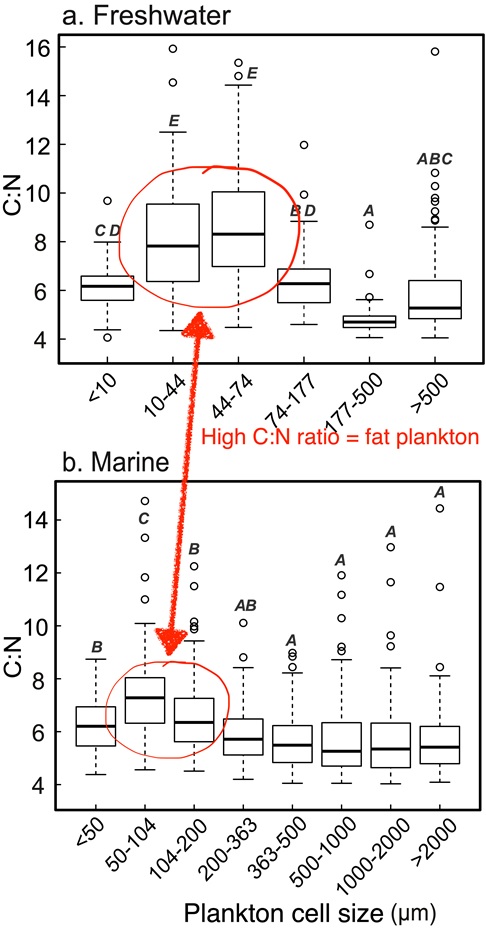Plankton cells can become fat, just like other organisms. The fatness appears as an increased ratio of carbon relative to nitrogen, the C:N ratio. Being fat confers an advantage to the cell, because fat can be a reserve for future leaner times. Fat plankton cells are also attractive prey for larger zooplankton, because the zooplankton would also like to reserve more carbon (from the fat) for their respiration. Understandings of the conditions leading to fat plankton are therefore important, not only for understanding nutritious conditions of phytoplankton but for the function and trophic transfer of energy in the entire plankton community. Which conditions leads to fat phytoplankton? It is well known know that fat phytoplankton appear when light is in excess compared to nutrients. In this research, we have extended this “light-nutrient” hypothesis to also explain which sizes of plankton are more likely to be fat. Small phytoplankton cells are generally more limited by light than by nutrients. Therefore, they have less opportunity to store fat. Larger phytoplankton, in contrast, are more likely to be nutrient limited, and therefore have an opportunity to store carbon in the form of fat. Furthermore, even larger plankton are typically mixotrophic or heterotrophic (they eat smaller plankton), and they therefore benefit from eating the fat phytoplankton, but they burn more of the fat themselves. Taken together, intermediate-sized plankton cells are most likely to be fat than small or large cells. We illustrate this new “size-based light-nutrient” hypothesis using an ecosystem model. Further, we see the consequences borne out by observations in fresh water and marine ecosystems.
The work is a collaboration between the Centre for Ocean Life at the Technical University of Denmark and the Institute of Oceanography at the National Taiwan University.
The paper can be found here
Pei-Chi Ho, Chun-Wei Chang, Fuh-Kwo Shiah, Pei-Ling Wang, Chih-hao Hsieh, and Ken H. Andersen "Body size, light intensity, and nutrient supply determine plankton stoichiometry in mixotrophic plankton food webs" The American Naturalist
Photo credits: Fredrik Ryderheim
